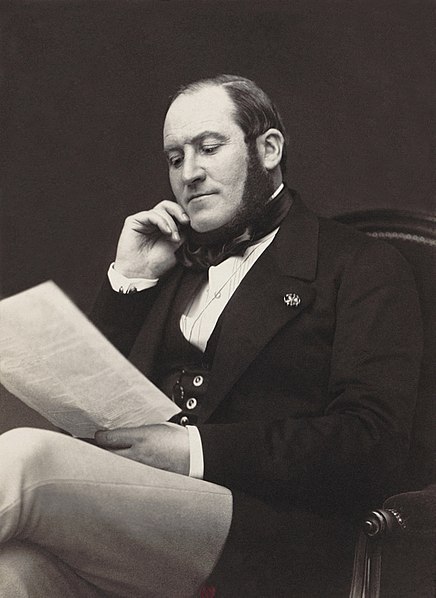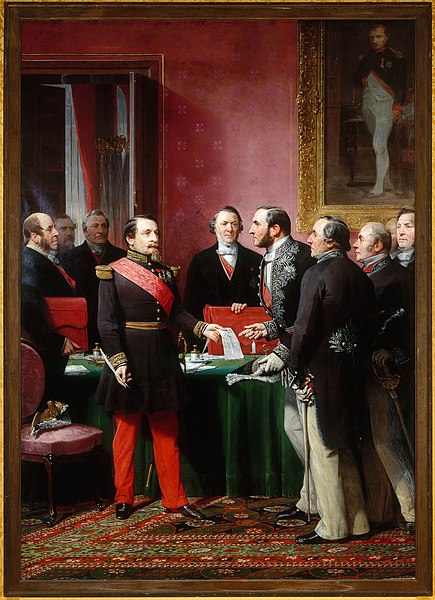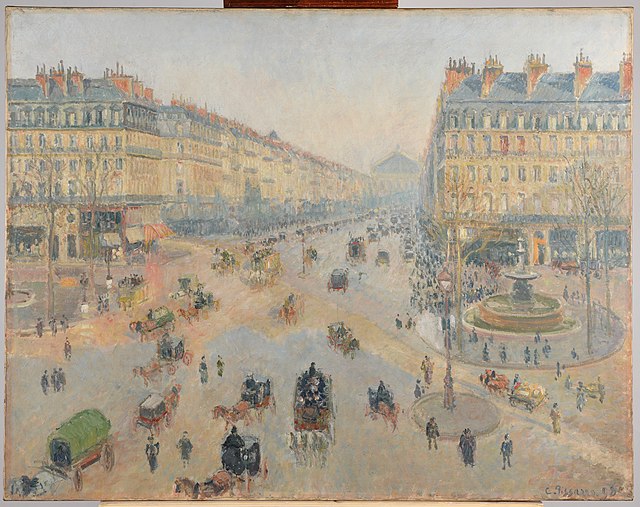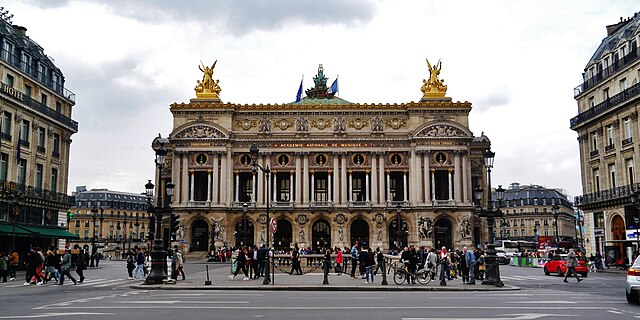Paris during the Second Empire
During the Second French Empire, the reign of Emperor Napoleon III (1852–1870), Paris was the largest city in continental Europe and a leading center of finance, commerce, fashion, and the arts. The population of the city grew dramatically, from about one million to two million persons, partly because the city was greatly enlarged, to its present boundaries, through the annexation of eleven surrounding communes and the subsequent creation of eight new arrondissements.
Music in the Tuileries Gardens by Édouard Manet (1862).
Napoleon III by Alexandre Cabanel (about 1865)
The new boulevards and parks built by Haussmann during the Second Empire
An editorial cartoon of 1858 illustrates the opposition of many residents of the Paris suburbs to Napoleon III's plan to make them part of the city.
Georges-Eugène Haussmann, commonly known as Baron Haussmann, was a French official who served as prefect of Seine (1853–1870), chosen by Emperor Napoleon III to carry out a massive urban renewal programme of new boulevards, parks and public works in Paris commonly referred to as Haussmann's renovation of Paris.
Georges-Eugène Haussmann
Napoleon handing over to Baron Haussmann the decree of annexation of suburban communes to Paris (1860), by Adolphe Yvon The annexation increased the city from twelve to the present twenty arrondissements.
The Avenue de l'Opéra, one of the new boulevards created by Napoleon III and Haussmann. The new buildings on the boulevards were required to be all of the same height and same basic façade design, and all faced with cream-coloured stone, giving the city center its distinctive harmony.
The Paris Opera was the centerpiece of Napoleon III's new Paris. The architect, Charles Garnier, described the style simply as "Napoleon the Third".








